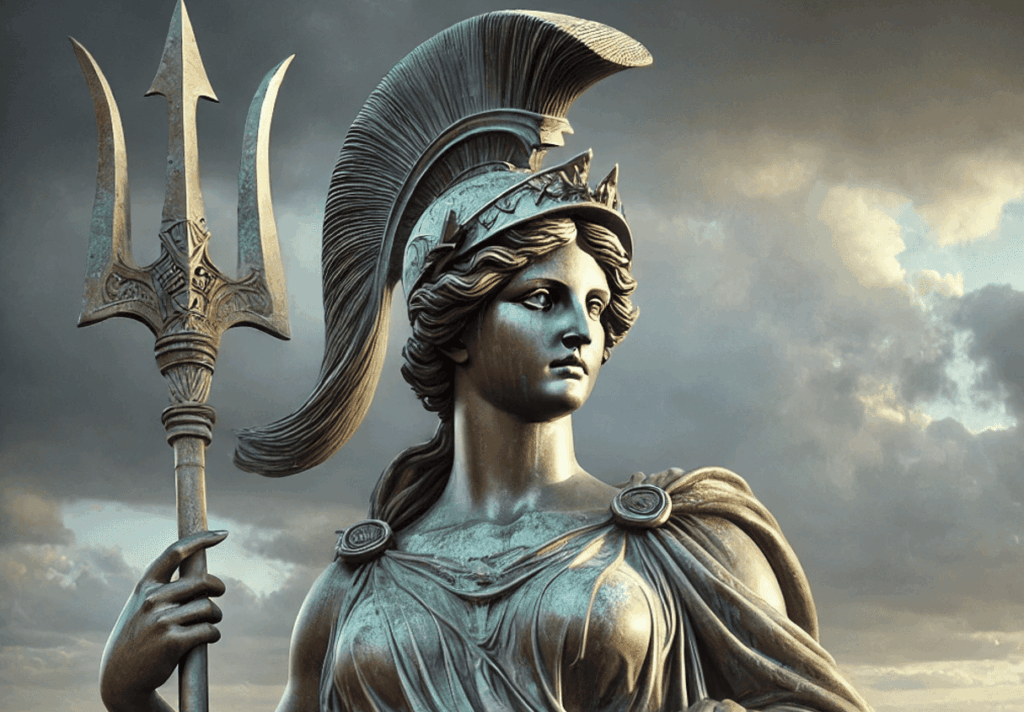

Britannia is the national symbol of the UK and can be seen across the country on multiple statues or old pound sterling coins. She has an imposing stature, holding a trident and shield, with a very serious expression—simply pure Britannia.
Whoever sees the figure for the first time does a double take because…doesn’t it just feel a bit…Greek? Well, yes. The story of Britannia is one of those fascinating historical accounts in which Britain’s very own symbol turns out to have deep roots that go back to ancient Greece.
It seems almost counterintuitive, doesn’t it? She embodies the spirit of Britain and looks like she stepped right out of a classical myth from the Mediterranean. So, the question is…how did this island nation of the Atlantic end up with an icon dressed, essentially, in Greco-Roman fashion? This is a story that involves Romans and revivals.

Britannia might be the traditional national symbol of the UK, but it wasn’t a British invention. Her origins lie squarely with the Romans. When they set foot and named the province Britannia, they did as they’d always done: they minted coins and made statues featuring a personification of the place.
This early Britannia was created around the 2nd century AD. It was their way of putting a face to the territory they had just claimed. The Romans themselves, however, were massive fans—some might say cultural magpies—of ancient Greece. Their art, gods, architecture, and entire identity were adapted and absorbed from the Greeks. Hence, the very blueprint the Romans used for Britannia already had that strong Greco-Roman flavor and usually looked strong, seated, maybe battle-ready—a starting point that would stick.

By the time Britain began flexing its muscles as a global power and took its first steps as an imperial stronghold, particularly around the 17th and 18th centuries, there was a real hunger for symbols that screamed “importance.” Luckily, Europe was in the grip of Neoclassicism, a massive revival of interest in all things Greek and Roman. It was the perfect moment to bring Britannia back into the limelight. This time, she wasn’t just representing a Roman province, however; she was being styled as the embodiment of Great Britain itself, draped deliberately in the grandeur of antiquity.
This Neoclassical makeover is where the Greek influence really shines through. That helmet Britannia wears is typically a Corinthian helmet. That symbol in itself is pure ancient Greece, the kind you would see on statues of Athena, the goddess of wisdom and war. Putting that on Britannia was like giving her instant classical vibes, linking Britain to ancient strategic thinking and authority. It’s a visual power play that connected London to ancient Greece.

The trident, on the other hand, perfectly symbolizes Britain’s mastery of the seas. Nevertheless, it is impossible not to see Poseidon, the Greek god of the sea, holding his original version. Giving Britannia this powerful artifact was a direct claim to naval dominance, borrowing this great symbolism straight from Greek mythology. Even her clothes often look like the flowing robes you see on Greek statues, adding that touch of timeless elegance. It’s like Britain’s symbolic identity was created with the best gear classical antiquity had to offer. But why did Britain go Greco-Roman?
You might wonder why Britain leaned so heavily on these ancient, foreign symbols. Well, it all comes down to smart branding, really. In an age of empire-building and competing nations, associating Britain with the classical world meant instant prestige. It suggested a connection to the perceived democratic ideals of Athens, the imperial might of Rome, and the philosophical weight of antiquity.
Britain was thus positioned not just as a new power but as an inheritor of ancient virtues— stability, wisdom, and strength. Wrapping the nation in these classical visuals was a way to project an image of legitimacy and cultural depth on the international stage and make the nation look established, serious, and civilized.
Even now, following the end of the British Empire, Britannia hasn’t disappeared. She still features in art and lingers in the cultural memory of millions of Britains.
